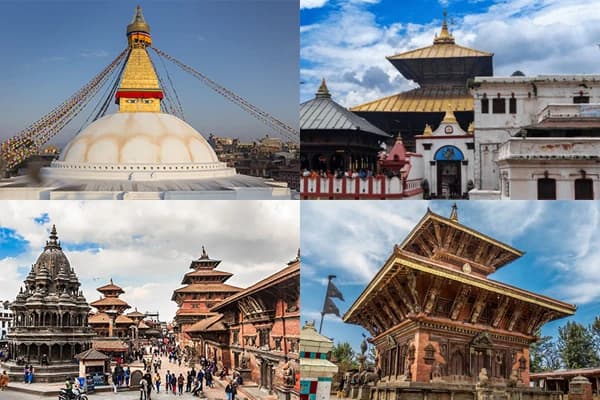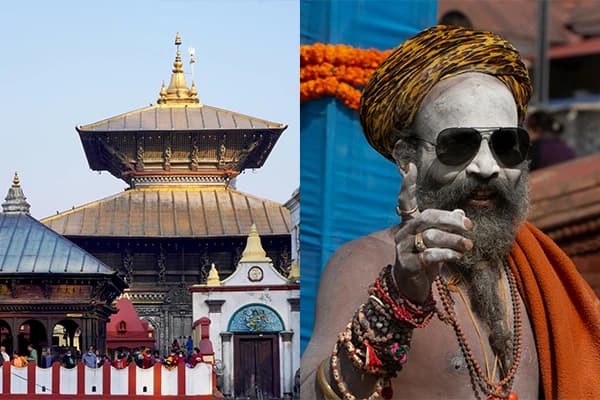Mental Prep: Romantic vs. Realistic
When I prepared for a trek, my mind often got filled with the romantic visions of snowcapped peaks, serene trails, and life-changing moments. I thought of the alluring, breathtaking scenery that I was going to see on the journey.
The promise of adventure and the dream of personal transformation did not leave until I started living them.
And it is good to have the idea of finding yourself in the Himalayas. It is good to have a highly motivating and positive tone to conquer the legendary trail. Also, it is true that romanticizing the trek helped fuel my motivation, especially during the tough moments.
But the dreams fade away when reality hits harder.
Trekking in Nepal was both physically and mentally demanding. I had to face the varied terrains, challenging weather, and basic living conditions.
The high altitudes, long days, and fatigue were the inevitable part of the experience. It’s not a curated Instagram reel to be taken as an easy thing. Instead, it was sore muscles, thin air, and rewarding AF moments.
So, while it is good to romanticize the journey, it is also important to set realistic expectations about the daily discomfort, like cold showers, simple food, basic accommodations, and the possibility of altitude sickness.
What I Should’ve Packed (and Left at Home)
At the time of the packing for the trekking in Nepal, every item seemed important to me. But it was not. Most of the items were not even used during the trek. It just became a burden throughout my journey. So, I had come up with the list, best for the first-time trekkers in Nepal.
Bring
- Layered clothes including thermal underwear (2 sets), quick-dry T-shirts (2–3), trekking pants (2), a fleece or down jacket (windproof and waterproof), a waterproof jacket and pants, a woolen hat, gloves (warm and thin liners), and woolen socks (4–5 pairs).
- A sun hat and sunglasses for protection from UV rays at high altitudes.
- Well broken-in waterproof hiking boots with ankle support.
- A smaller day backpack with a rain cover for daily essentials.
- Water bottle and water purification tablets or filter.
- Headlamp with extra batteries and power bank.
- Basic toiletries like wet wipes, lip balm with SPF, sunscreen (SPF 50+), and hand sanitizer.
- Personal medications and blister tape.
- Electronics like phones, chargers, and adapters.
- Snacks like granola bars, trail mix, and instant tea or coffee.
- Cash in the Nepali currency.
Skip
- Bulky clothes that take time to dry.
- Multiple pairs of shoes or boots.
- Too many gadgets or heavy camera equipment.
- Too many toiletries.
- Large bottle of shampoo or soap.
- Heavy paperbacks or books.
- Large quantities of food.
- Heavy jewelry and expensive clothes like jeans.
Permits, Red Tape & Paperwork 101
It is legally mandatory for all the trekkers to take several permits tailored to the specific regions. I was lucky that I had my guide to guide me through the permit processes. The permits, red tape, and paperwork were actually the most important part of any treks in Nepal. If you are trekking for the first time, understanding the permit system is essential to avoid the fines.
For most of the permits, the documents like a valid passport copy, passport-sized photos, a valid visa copy, a trek itinerary, a name list of trekkers, travel and health insurance documents, contact details, and agency documents (if trekking with an agency) are required.
Below are the mandatory permits and their types.
- TIMS ECard Permit (Trekkers' Information Management System)
It is issued jointly by the Nepal Tourism Board and the Trekking Agencies Association of Nepal. It is mandatory for all trekkers except those entering restricted areas and some specific regions. For this card, you must be accompanied by the guide or registered trekking agencies.
It costs around $15 for international trekkers and around $9 for SAARC nationals.
- Restricted Area Permit (Special Permit)
This permit is required for trekking in the restricted areas like Upper Mustang, Upper Dolpo, Manaslu, Kanchenjunga, and others. It is issued only through registered trekking agencies via the Department of Immigration.
The cost of the Upper Mustang restricted permit is USD 500 for the first 10 days plus USD 50 per day thereafter. The costs may vary according to the regions.
It is needed for trekking inside Nepal’s national parks, like Langtang National Park and Sagarmatha National Park. Department of National Parks and Wildlife Conservation issues this permit. You can purchase the permit at the park entrances, online, or at the tourist service center in Kathmandu.
The cost of the national park permit is around NPR 3,000 (~$22.50).
This permit is required for trekking in the conservation areas managed by the National Trust for Nature Conservation (NTNC), like the Annapurna Conservation Area. It is issued at the NTNC permit counter in Kathmandu.
The cost of the permit may vary based on the places you plan to trek.
- Rural Municipality Trekking Permit
This permit is needed while trekking in specific regions like the Everest region. In this region, there is no need of a TIMS card, but a Khumbu Pasang Lhamu Rural Municipality is needed. It is handled by the local governments.
The cost of the rural municipality trekking permit varies according to the regions. The cost of the Khumbu Pasang Lhamu Rural Municipality permit is NPR 3,000 per person.
For the high-altitude treks like the Everest Base Camp Trek, the Annapurna Circuit Trek, and the Manaslu Circuit Trek and other restricted areas, travel insurance has been mandatory. It is needed during the obtaining of trekking permits.
A valid visa is mandatory for all foreign visitors. It can be obtained on arrival at Tribhuvan International Airport for most of the countries. It can be applied for in advance at Nepalese embassies too. The passport with at least six months of validity is required.
Altitude Is No Joke
I knew I was fit and healthy and took the altitude lightly. But I got humbled as I trek to the higher regions as one of my mates starts feeling unhealthy. The serious health issues caused by altitudes were real even for the fittest.
Here is the reason. As you ascend to the higher level, the oxygen level drops and the air becomes thinner. In this condition, symptoms can strike anyone, regardless of fitness or previous experiences.
The common symptoms of the altitude sickness issues that you can look for include headache, shortness of breath, disturbed sleep, loss of appetite, and fatigue. When the conditions become more severe, symptoms like persistent headache, nausea, vomiting, dizziness, confusion, and loss of coordination can be seen.
Some of the preventive measures are gradual ascent, including acclimatization days in the itinerary, staying hydrated, eating well, going slow, and avoiding alcohol and sleeping pills. Always listen to your body and prioritize health over schedule or summit fever.
What Tea Houses Were Really Like
The tea houses in the remote regions were not like the fancy five-star hotels like that in the cities. Instead, it was a simple lodge run by the local families offering basic facilities. It featured the simple and clean room with twin beds, bedding, and blankets.
In lower elevations, there may be multi-story concrete buildings with private rooms and attached western-style bathrooms. But, in the higher elevations, the rooms are more basic, often shared dormitories with minimal furniture and thinner walls.
Most of the teahouses I stayed in featured the solar lighting in dining areas. The charging facilities were only available in the communal charging area with a small fee. Some also offered hydroelectric power for the charging of the devices at an additional fee.
The dining was in the communal lounge. All the trekkers who trekked and stayed in the same teahouse were dining with me.
Also, there is no central heating. So bring your sleeping bag with you. If you don’t want more load, trust me, you will be grateful for that one blanket and the company of strangers. Also, Wi-Fi is not guaranteed, so make sure that you bring the offline entertainment.
Food, Water & The Dal Bhat Diet
The food and water were the most essential part of my trekking journey. It fueled my body. It was a true saying that without the proper diet and nutrition, no treks can be successful. It is because the trek comes with several challenges, and to face them, lots of courage as well as energy are required.
However, not all the food and water may fuel the body; some are harmful as well. For example, the water from the flowing river may seem to be clean but may contain harmful bacteria and other microscopic elements. These elements are responsible for diseases like malaria, cholera, diarrhea, and so on.
Also, uncooked or stale food may also be unhealthy. They may lack the proper nutrients or make you sick. These are the basic things. Let’s move into the other part.
I don’t know about all the trekkers, but I recommend having the veg meal if you are trekking for the first time. These are the reasons. The veg food digests quickly and releases the energy for the whole day, while the non-veg items may take time to digest.
The dal bhat with the other items except the veg are the best things. It is also a popular and affordable option. It gives steady energy the whole day. There is a popular saying called “dal bhat power, lasts 24 hours,” which means the exact same thing.
Also snacks like protein bars and nuts were beneficial to maintain my energy level during the trek. These items helped to recover from the energy crash and gave me a quick energy boost.
The drinks available in the tea houses mostly included ginger lemon tea. This type of tea was also very beneficial and healthy.
Toilets, Showers & Other Humbling Realities
As I started the trekking journey, everything was fine until I reached the higher altitudes. There were not the high-end attached bathrooms with Western-style toilets in the teahouses that I were expecting. Instead, there were basic teahouse rooms with the shared squat-style toilets and bucket showers.
The toilets, especially above roughly 2,500–3,000 meters, were the simple pit with foot placements on either side. The flush systems were also manual. Also, there was no toilet paper in most of the toilets.
The hot showers were less available, and if available, they were heated with solar power. For hot water, you have to pay extra. Outdoor showers were common.
These were the most humble realities that I faced.
Also, carry the tissue and sanitizer like your survival depends on it. Because it kind of does. The tissues are very useful during the trekking in the elevations. The wet wipes are the best ones. To stay hygienic and to remain refreshed all day.
Should You Hire a Guide or Porter?
Yes, of course. You definitely should hire a guide or porter. Having a guide and porter helped me so much during the trekking in Nepal. However, it’s upon you whether to hire both a guide and a porter or only one of them.
Hire a guide because the guide
- Can handle unexpected situations like sudden weather changes or health issues.
- Provides information on the rich cultural and natural insights.
- Guides you through the remote terrains.
- Helps during the emergency and gives you first aid.
Hire a porter because the porter:
- Carry heavy loads of the gear and equipment.
- Allows you to focus on the scenery and trekking without the strain of the heavy backpack.
- I better advise that if you are trekking for the first time, hire at least a guide or a guide-cum-porter. It will make your experiences way better than going completely solo.
The Unexpected Wins
The trekking truly offered me so many surprises and rewards beyond just reaching the summit or completing the trail. Reading books about the mountains is knowledge, and experiencing the words in reality is a whole new experience for me.
It taught me about the sense of belonging to a trail family. It taught me about the bond and community that forms among the trekkers, local guides, porters, and villagers. I got the trail family I didn't expect before the trekking journey to share the journey, challenges, and joys of trekking.
The other thing is opening my eyes to the towering silhouette of snowcapped peaks. The peaks that I have admired in the photographs, and seeing them in front of me, is a surreal feeling.
Also the weird sense of peace I got, especially when there is no signal. It was a change to unplug, recharge, and reconnect with myself and nature. It’s a reminder that sometimes, the best connection is the one you make with the world around you.
Final Thoughts: Trekking Changed Me—Here’s How
Planning and going trekking in the Himalayas of Nepal was one of the best decisions of my life. It was truly a transformative experience. It helped me leave impatience, ego, and expectations. It taught me that sometimes, letting go or accepting what it is, and starting a new journey is the best thing you can do.
I came to the Himalayas for the views, but I got more than just a view. All the things, like local cultures, people, hospitality, unique cuisines, serene trails, and a sense of accomplishment after conquering challenging trails, make me a new person, probably better than before.
Know more, trek smarter. Reach out now for a free consultation and personalized trekking plan.





